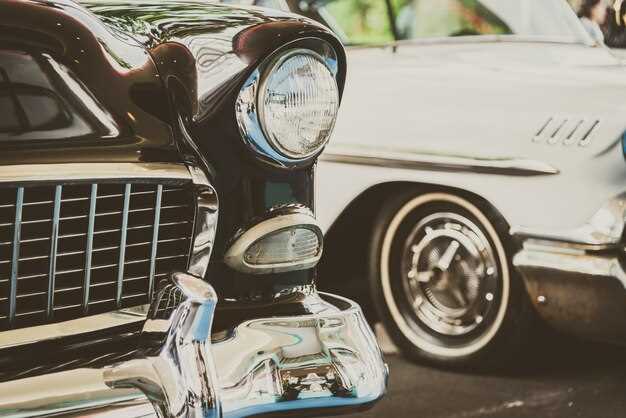
The classic car market continues to captivate enthusiasts and collectors alike, with 2024 showing trends that promise both excitement and investment opportunities. As we delve into the nuances of pricing, it’s essential to understand how various factors, such as rarity, condition, and market demand, shape the financial landscape of vintage automobiles. This year, we witness an intriguing blend of classic models that not only maintain their value but also appreciate significantly.
Among the influential trends, electric classic cars are gaining momentum as they combine nostalgia with modern technology. The emergence of restomods – vintage vehicles modernized with electric drivetrains – is creating a new niche that draws in a fresh demographic of buyers. This evolution highlights a shift in collector preferences, demonstrating that traditional horsepower is no longer the sole indicator of a car’s value.
In this article, we will explore the key pricing trends impacting the classic car market in 2024. Additionally, we will pinpoint some of the hottest picks that promise to be worthy investments or timeless enjoyments for collectors and enthusiasts. By understanding these trends and choices, buyers can make informed decisions to enhance their collections while ensuring they remain aligned with current market dynamics.
Understanding the Key Factors Impacting Classic Car Values in 2024
The classic car market is influenced by a plethora of factors that determine the values of these vintage vehicles. As we enter 2024, it is crucial for collectors and enthusiasts to understand these dynamics to make informed investment decisions.
Market Demand plays a central role in driving prices. The appeal of classic cars often fluctuates based on trends in popular culture and consumer preferences. Vehicles associated with iconic films, music, or historical events typically see surges in interest, affecting their valuations. Keeping an eye on social media trends and niche automotive forums can provide insights into emerging popular models.
Rarity and Production Numbers significantly affect value. Cars that were produced in limited quantities or have unique features usually command higher prices. For instance, a model with significant racing heritage or one-off modifications can become a prized possession among collectors.
The condition of a classic car is paramount. Cars that are fully restored and maintained tend to fetch higher prices than those requiring repairs. The quality of the restoration plays a critical role as well; a professional job can significantly boost value, while a poor restoration may detract from it.
Originality is another key factor. Classic cars that retain their original parts and features are often valued more highly than modified versions. Collectors appreciate factory specifications, and vehicles that have undergone minimal alterations tend to have more appeal in the marketplace.
Economic Conditions also influence classic car prices. Economic downturns can depress prices as collectors become more conservative with their spending. Conversely, in a robust economy, the demand for collectible cars often rises, driving prices upward.
Finally, documentation and provenance play a crucial role in enhancing a vehicle’s value. Cars with detailed history, including service records and previous ownership, can command a premium. Provenance provides a narrative that collectors find appealing, elevating the perceived value of the vehicle.
Understanding these key factors will empower collectors and enthusiasts as they navigate the classic car landscape in 2024. By staying informed about market trends and assessing these variables, they can make more strategic decisions regarding their classic car investments.
The Hottest Classic Cars to Invest in This Year

This year, the classic car market is vibrant, with several models gaining attention from collectors and investors alike. These vehicles not only embody nostalgia but also present potential for significant appreciation. Here are some of the hottest picks for investment in 2024.
First on the list is the 1965 Ford Mustang. Considered an American icon, this model’s popularity has surged due to its timeless design and cultural significance. Demand for well-restored early Mustangs is high, making them a solid investment choice.
Another standout is the Porsche 911 (964) produced in the late 1980s to early 1990s. As the 911 series continues to evolve, vintage models like the 964 are becoming more desirable. Their blend of performance and classic aesthetics is appealing to a wide range of buyers, driving prices upward.
The Chevrolet Camaro Z/28 from 1968 to 1973 is also attracting investors. This classic muscle car is celebrated for its powerful performance and aggressive styling. As interest in American muscle cars grows, the Z/28’s value is expected to rise sharply, especially for models in pristine condition.
For those drawn to European classics, the Mercedes-Benz 280SL (Pagoda) from 1963 to 1971 remains a top pick. With its elegant design and strong performance, this model captures both the hearts of enthusiasts and collectors, leading to a steady appreciation in value.
Finally, the Datsun 240Z is making waves in the classic car community. Known for its distinctive design and driving dynamics, the 240Z is becoming increasingly sought after. As prices for Japanese classics climb, now is the perfect time to invest in this legendary sports car.
In conclusion, investing in classic cars requires careful consideration, but these models stand out as promising options for 2024. Their historical significance, performance, and increasing demand suggest that they can deliver substantial returns in the near future.
Analyzing Market Trends: Where to Find the Best Deals on Classic Cars

As the classic car market evolves, understanding current trends is essential for buyers looking to secure the best deals. One of the most significant trends in recent years is the shift towards online platforms for buying and selling classic vehicles. Websites and auctions dedicated to classic cars have gained considerable traction, offering a wider selection and often more competitive pricing compared to traditional dealerships.
In 2024, buyers should focus on emerging markets where classic vehicles remain undervalued. Countries in Eastern Europe and parts of South America are home to classic cars that may not yet be seen by major collectors, allowing savvy buyers to discover hidden gems. Additionally, monitoring regional car shows and auctions can provide insight into pricing trends and availability, making it easier to spot a favorable deal before it goes mainstream.
Social media groups and online forums dedicated to classic cars also present opportunities for finding deals. Enthusiasts share leads on vehicles for sale, providing direct access to private sellers who may not list their cars on larger commercial platforms. Networking within these communities can reveal valuable information about pricing trends and help negotiate better deals.
Timing is crucial when searching for classic cars. Off-season buying, typically from late fall to early winter, often yields the best prices as sellers become more motivated to offload their vehicles. Additionally, being aware of market cycles, such as increased demand during summer months or during major car events, can help buyers strategize their purchase timing more effectively.
Lastly, conducting thorough research is critical. Understanding the historical value of specific makes and models can guide buyers toward making informed decisions. Tools like price guides and classic car valuations can provide a benchmark for fair pricing, helping buyers identify vehicles that are priced below market value.
